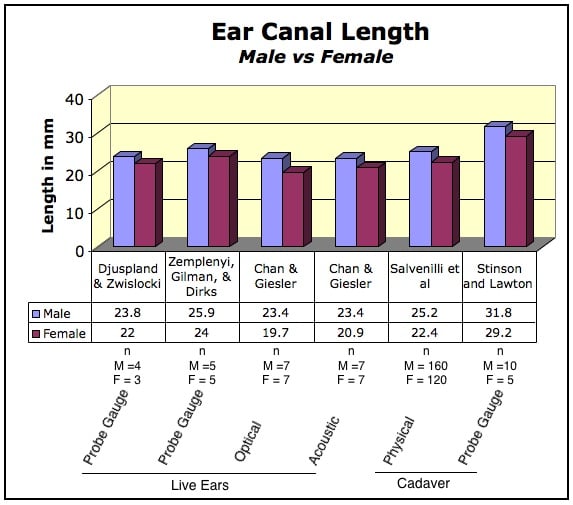In part 1 of this blog series, some characteristics of the occlusion effect were discussed. This refers to low frequency voice or musical energy (below 500 Hz) that is transduced (typically through the boney portion of the ear canal) and unless the ear is blocked up, is not heard- the low frequency sound energy escapes out of the unoccluded ear canal. However, when blocked by a hearing aid, an in-ear monitor, or an earplug as in the case of a musicians’ earplug, then this low frequency energy is trapped in the era canal and transmitted onwards to be heard.
This effect only occurs for sounds with significant energy that is in the 100-400 Hz region and therefore is restricted to bass instruments and for the vowels [i] as in ‘beat’ and [u] as in ‘boot’.
Of course, one great strategy would be to play the piccolo or learn to speak a new language with no high vowels, but alas, all languages of the world have the vowels [i] and [u]… even Klingon!
This is something that can clinically be measured and takes about 15 seconds. In the following case, this was of a trombonist who was referred to me to see if I could resolve the occlusion effect even though his ER15 musicians’ earplugs had been remade with a 25 foot long earmold!
The solution ended up being that I simply drilled a 1.4 mm diameter vent through his hearing protection. This did compromise the low frequency attenuation by about 4-5 dB but at least he was wearing the earplugs and could successfully use them while practicing and during live performances.
So, here is the strategy:
1. Calibrate the real ear measurement device in the normal fashion.
2. Disable the loudspeaker and the reference microphone of the real ear measurement device. Various manufacturers do this in different ways but you can check the owner’s manual. For Audioscan turn to the stimulus level to “0 dB”. For Frye turn the stimulus level to “off”. In both cases, this turns out the real ear measurement device’s loudspeaker and disables the reference microphone. Of course, the person who we are working with shouldn’t move much during this measurement since the reference microphone is now disabled.
3. Have the person utter and sustain the vowel [i] as in ‘beat’ for the length of the sweep (Audioscan) or the FFT acquisition (Frye) WITHOUT any hearing protection in place. This will trace out the formant (resonant) structure of the first formant (F1) for [i] which is around 250 Hz.
4. Then do number 3 again with the hearing protector (or turned off in-ear monitor or turned off hearing aid) in place.
5. This difference (measured at 250 Hz) is an estimate of the occlusion effect.
6. Finally, verify that your clinical resolution of this problem has actually worked.
Other than performing a pair of real ear measurement results (unoccluded and occluded) you can ask your client to say the two vowels [i] as in ‘beat’ and [a] as in ‘father’. If the [i] is louder than the [a] then there is still significant occlusion effect that still needs to be addressed. If the [i] and [a] are similar in loudness, then the occlusion effect has been resolved.
This would work as well with [u] as in ‘boot’ instead of the [i] but both of these two high vowels have the same low frequency first formant (at or below 250 Hz).
When I first began working with musicians in the 1980s after the invention of the ER15 musicians’ earplugs in 1988, I made the earmold bores as long as the person could tolerate- which wasn’t very often. Today, whenever I have a vocalist, a brass player, or a single reeded instrument (clarinet or saxophone) that was being played, I routinely order it from the earmold laboratory with a vent. This does compromise the low frequency attenuation somewhat but inevitably ensures wearability of these hearing protectors.








Marshall:
Thanks for your usual clear and engaging prose. I asked my aud for a real-ear test a few weeks ago, and she said that the probe-mic couldn’t get past my new ear-mold, which was hard plastic, well enough to get a clear reading. So she did some kind of simulated test. What gives?